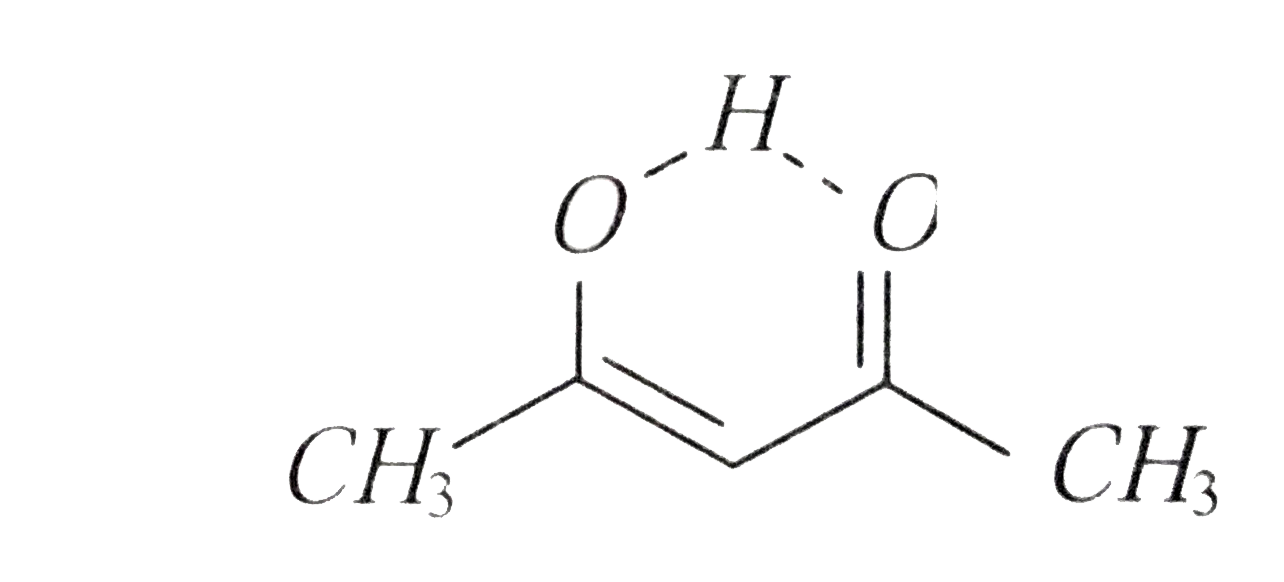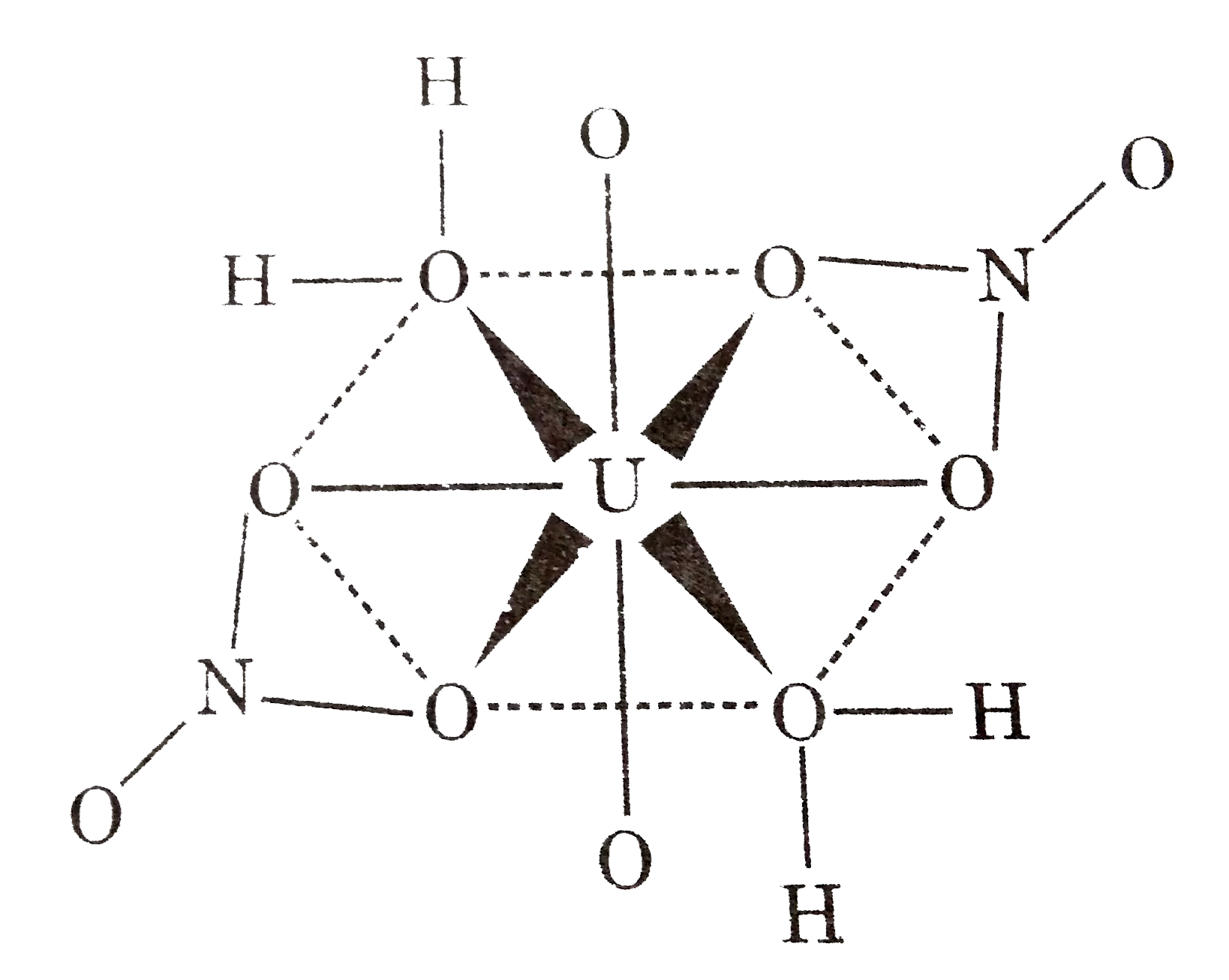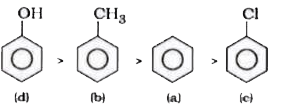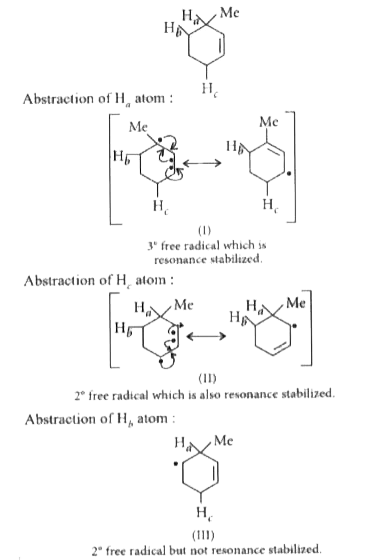Explore topic-wise InterviewSolutions in .
This section includes InterviewSolutions, each offering curated multiple-choice questions to sharpen your knowledge and support exam preparation. Choose a topic below to get started.
| 26751. |
The order of melting point , boiling point and densities of halogens |
|
Answer» GRADUALLY decreases from `F_(2)` to `I_(2)` |
|
| 26752. |
The number of octahedral voids present in a lattice is _A_. The number of closed packed particles, the number of tetrahedral voids generated is _B_ the number of closed packed particles |
|
Answer» A-equal, B-half |
|
| 26753. |
The order of acidic strength of o, m and p-nitrophenol is |
|
Answer» <P>`o GT m gt p` |
|
| 26754. |
The number of octahedral void(s) per atom present in a cubic close-packed structure is- |
|
Answer» 2 |
|
| 26755. |
The order of K_(eq) values for the following keto-enol equilibrium constants is CH_(3)-CHO overset(K_(1))hArrCH_(2)=CH-OH, CH_(3)-overset(O)overset(||)(C)-CH_(2)-overset(O)overset(||)(C)-CH_(3)overset(K_(2))hArrCH_(3)-overset(OH)overset(|)(C)=CH-overset(O)overset(||)(C)-CH_(3) {:(""O""OH),("||""|"),(CH_(3)-C-CH_(3)overset(K_(3))hArrCH_(2)=C-CH_(3)):} |
|
Answer» `K_(1) gt K_(2) gt K_(3)`  Hence enol content MAXIMUM (out of `CH_(3)CHO` and `CH_(3)-underset(O)underset(||)(C)-CH_(3)`) more the number of hyperconjugating H-atom, more the enol content. Hence enol content in `CH_(3)-underset(O)underset(||)(C)-CH_(3)gt CH_(3)CHO` `RARR K_(2) gt K_(3) gt K_(1)` Hence choice (b) is correct while (a), (c) and (d) are incorrect. |
|
| 26756. |
The number of octahedral void(s) per atom present in a cubic close -packed structure is : |
|
Answer» 1 |
|
| 26757. |
The order of ionic character in metal halides is.... |
|
Answer» MF gt MCI gt MBR gt MI |
|
| 26758. |
The order of increasing sizes of atomic radii among the elements O, S, Se and As is : |
|
Answer» `As LT S lt O lt SE ` |
|
| 26760. |
The order of increasing reactivity towards HCI of the following compounds will be (1)CH_2=CH_2 (2)(CH_3)_2C=CH_2 (3)CH_3CH=CHCH_3 |
|
Answer» `1 lt 2 lt 3` |
|
| 26761. |
The number of octahedral sites per sphere in a c.c.p. (f.c.c.) structure is: |
|
Answer» 0 |
|
| 26762. |
The order of increasing freezing point of C_2H_5OH, Ba_3(PO_4)_2 , Na_2SO_4 , KCl and Li_3PO_4 is |
|
Answer» `Ba_3(PO_4)_2 lt Na_2SO_4 lt Li_3PO_4 lt C_2H_5OH lt KCl` `i` for `C_2H_5OH=1,i` for `Ba_3(PO_4)_2=5,i` for `Na_2SO_4 =3` `i` for `Li_3PO_4` = 4 , `i` for KCl =2 THUS , depression in FREEZING point will be in order : `C_2H_5OH lt KCl lt Na_2SO_4 lt Li_3PO_4 lt Ba_3(PO_4)_2` Thus, freezing point will be in order : `Ba_3(PO_4)_2 lt Li_3PO_4 lt Na_2SO_4 lt KCl lt C_2H_5OH` |
|
| 26763. |
The order of increasing ionic radius of the following is: |
|
Answer» `K^(+) lt LI^(+) lt MG^(2+) lt Al^(3+)` |
|
| 26764. |
The number of octahedral sites in a cubical close pack array of N spheres is : |
|
Answer» N/2 |
|
| 26765. |
The order of increasing basic strength among m-toluidine (I), p-toluidine (II) and o-toluidine (III) is |
|
Answer» `III lt II lt I` m-Toluidine `(K_(b)= 5 xx 10^(-10))` o-Toluidine `(K_(b) = 2.6 xx 10^(-10))` `:.` Correct order is `III lt I lt II` |
|
| 26766. |
The number of octahedral sites for a lattice consisting of N-atoms is : |
|
Answer» N |
|
| 26767. |
The order of heat of hydrogenation in following compounds :- |
|
Answer» I lt II lt IV lt III |
|
| 26768. |
The order of following reaction is …………… H_(2(g))+Cl_((g))overset(hv)to2HCl_((g)) |
|
Answer» 2 |
|
| 26769. |
The number of O_3molecules in 16 g of ozoneis approximately. |
|
Answer» `2 XX 10^23` 16 g of `O_3` contain molecules ` = (6.02 xx 10^23)/(48) xx 16= 2 xx 10^23` |
|
| 26770. |
The number of O-U-O linkages in Uranyl nitrate dihydrate UO_(2)(NO_(3))_(2).2H_(2)O is .......... . |
Answer» 
|
|
| 26771. |
The order of esterification of alcohols is …. |
|
Answer» TERTIARY `GT`PRIMARY `gt` SECONDARY |
|
| 26772. |
The order of equivalent conductance at infinite dilution for LiCl, NaCland KCl is |
|
Answer» `LiCl gt NaCl gt KCl` |
|
| 26773. |
The number of o bonds, t bonds and lone pair of electrons present in acetic acid are |
|
Answer» 7`sigma`-BONDS, 2 `pi`-bonds, 2 lone pair of `e^(-)` |
|
| 26774. |
The number of o and pi -bonds between two carbon atoms in calcium carbide are |
|
Answer» ONE `sigma`, one `pi` |
|
| 26775. |
The order of energies of following combination (a)2HHe (b)H_2+He_2 (c )He_2+2H and (d)H_2+2He is |
|
Answer» `d LT a ltbltc` |
|
| 26776. |
The number of Nucleotide pairs present in one turn of DNA helix |
|
Answer» 10 |
|
| 26777. |
The order of electron gain enthalpy of VI A group elements is |
|
Answer» `S GT SE gt TE gt PO gt O` |
|
| 26778. |
The number of nonbonding electron pairs in O_2molecule is |
|
Answer» 2 |
|
| 26779. |
The order of E.A of F, Cl, Br, and I is : |
|
Answer» F LT Clgt BRGT I<BR>F gt Clgt Brgt I |
|
| 26780. |
The number of nodel planes present in sigma^(*)santibonding orbitals is |
|
Answer» 0 
|
|
| 26781. |
The order of density of the nucleus is |
|
Answer» `10^(8) KG// C c` |
|
| 26782. |
The number of nodal planes is greatest for the orbital: |
|
Answer» 1s |
|
| 26783. |
The order of decrese in atomic radii for Be, Na, and Mg : |
| Answer» Answer :A | |
| 26784. |
The number of nitrogen atoms present in reduced product obtained on reducing nitrobenzene using LiAlH_(4) followed by aqueous work. |
|
Answer» |
|
| 26785. |
The order of decreasing stability of the carbanions (1) (CH_(3))_(3)bar(overset(..)(C))(2) (CH_(3))_(2)bar(overset(..)(C))H (3) CH_(3)bar(overset(..)(C))H_(2)(4) C_(6)H_(5)bar(overset(..)(C))H_(2) is |
|
Answer» `1 gt 2 gt 3 gt 4` `underset("Isoproyl carbanion")((CH_(3))_(2)overset(-)overset(..)(C)H) gt underset(underset("Cabanion")("Tert-butyl"))((CH_(3))_(3)overset(-)overset(..)(C))` |
|
| 26786. |
The number of neutrons in the parent nucleus which gives ""^14Non beta emission is |
|
Answer» 14 |
|
| 26787. |
The number of neutrons in the parent nucleus which gives N^14 on beta-emission and the parent nucleus is |
|
Answer» `8, C^(14)` No. of neutrons in `C^(14) = 14 - 6 = 8` |
|
| 26788. |
The order of decreasing stability of the carbanions (CH_(3))_(3) C^(-), (CH_(3))_(2) CH^(-) (II) , CH_(3) CH_(2)^(-) (III) , C_(6) H_(5) CH_(2)(IV) is |
|
Answer» `I gt II gt III gt IV` |
|
| 26789. |
The order of decreasing reactivity towards electrophilic reagent, for the following compounds : (a) Benzene (b) Toluene (c) Chlorobenzene (d) Phenol Would be : |
|
Answer» `B GT d gt a gt C` 
|
|
| 26790. |
The numberof neutrons in deuterium is |
|
Answer» 2 |
|
| 26791. |
The number of neutrons emitted when._(92)^(235)U undergoes controlled nuclear fission to ._(54)^(142)Xe and ._(38)^(90)Sr is |
|
Answer» |
|
| 26792. |
The order of decreasing ease of abstraction of hydrogen atoms in the following molecule is |
|
Answer» `H_(a) gt H_(b) gt H_(c)`  `2^(@)` free radical but not resonance STABILIZED. Thus, STABILITY order of free radicals : `(I) gt (II) gt (III) ` `therefore` Abstraction order will be : `H_(a) gt H_(c) gt H_(b)` |
|
| 26793. |
The number of neutrons emitteed when ._(92)^(235)U undergoes controlled nulclear fission to ._(54)^(142)Xe and ._(38)^(90)Sr is: |
|
Answer» Applying MASS number balance `235+1=142+90+x` `x=4` |
|
| 26794. |
The order of decreasing ease of reaction withammonia is |
|
Answer» ANHYDRIDES, ESTERS, ETHERS |
|
| 26795. |
The number of neutrons emitted when ._(92)^(235) U undergoes controlled nuclear fission to ._(54)^(142)Xe and ._(38)^(90)Sr is : |
|
Answer» |
|
| 26796. |
The order of decreasing ease of abstraction of hydrogen atoms in the following molecule |
|
Answer» `H_(a) gt H_(B) gt H_(C)` |
|
| 26797. |
The number of neutrons emitted when ""_(92)^(235) U undergoes controlled nuclear fission to ""_(54)^(142) Xe and ""_(38)^(90) Sr is |
|
Answer» `y = (236- 232) = 4` NET no. of .n. emitted = `(4 - 1)` = 3 |
|
| 26798. |
The number of neutrons accompanyng the formation of _(54)^(139)Xe and _(38)^(139)Xe from the absorption of a slow neutron by _(92)^(235)U followed by nuclear fision is: |
|
Answer» Number of `alpha`-particle emitted `=(234-206)/(4)=7` Now the associated decrease in atomic number would be `14 (=2xx7)` and thus the atomic number of the daughter atom would be `76(=90-14)`. But the actual atomic number of lead is `82 E`. the atomic number is six more than EXPECTED. This is because of the emission `beta`-particle. Since there is an INCREASE of one in atomic number due to the emission of one `beta`-particle, we have Number of `beta`-particles emitted `=(82-76)/(1)=6` Hence, number of `alpha`-particles emitted `=7` ltbr,. Number of `beta`-particles emittes `=6` ANSWER is `6+7=13` |
|
| 26800. |
The number of neutrons accompanying the formationof ""_54^139Xe and ""_38^94Sr from the absorption of slow neutrons by ""_92^235U followed by nuclear fission is |
|
Answer» 0 Equating mass NUMBER on both sides 235+1= 139+94+(x x 1) x=3 Thus, 3 neutrons released in the PROCESS. |
|